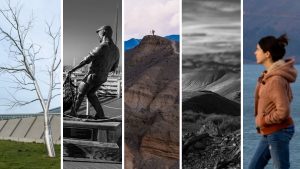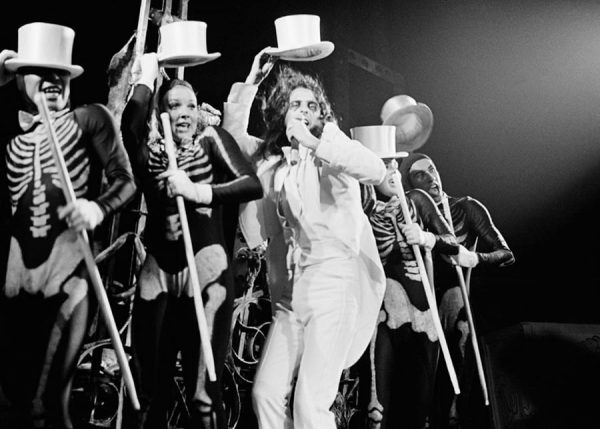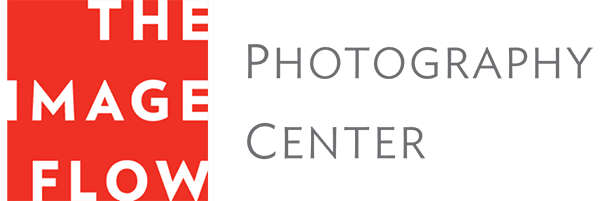

How did a 14 year old become a rock and roll photographer?
In those days concerts weren’t events featuring a single key artist with a minor opening act. Every concert was an event featuring 3 or 4 bands on each bill – and often an early and a late show. So the bands would play from 8-11 and they’d clear the hall and start again, with ‘late shows’ often going to dawn, (after all, bars stay open until 4 a.m. in New York to this day!) There were multiple shows each week so we could see 8, 10, 12 bands in a given week. Initially I would come to the Academy of Music as a ticket-holder and run up to the stage with my cameras, take a few photos and then get thrown out.
I had a black and white dark room in my parent’s basement. My thing was black and white print photography. I loved the darkroom and the magic of seeing the image appear in the Dektol.
I decided to make photography my life’s calling, which is funny looking back at myself being just 14. From those early shows I made a couple of prints, which in those days you would mount using dry mount tissue and a press, and pressing them onto archival board. I went to Manhattan from Queens and sat in the lobby of the promoter, Howard Stein’s office. When he came out, I jumped up and I pulled the prints out. As his staff was trying to push me away, he looked over his shoulder and said: “Wait a minute. Let me see. What have you got there?” I showed him the print of Johnny Winter that’s in today’s show. He said, “That’s pretty good. I want you to come to every show. I’ll give you a pass and in exchange I want a print from every show.” That’s how it all started – and I became the house photographer at the Academy of Music for two and a half years, creating over 10,000 images.
Why did you decide to bring these photos back to life now?
Most of the original prints were destroyed in the big Folsom Street fire of 1980. The negatives sat in my parent’s attic until last year. The main reason I didn’t pull the old 35mm negatives back out is that black and white darkrooms and wet chemical processes had gone the way of televisions with rabbit ears and no remotes. Digital imaging hadn’t evolved to the point where you could scan 35mm black and white negative images and get beautiful archival prints until about 6-7 years ago. Several years ago I saw how today’s imaging process can reproduce the work we did in the wet darkroom and I was completely captured. I thought, “now is the time to bring this collection back to life.”
But my premise was to approach the digital restoration and printing of these images the same way I would in a black and white wet darkroom. Meaning I would not use extreme tools in Photoshop to alter the images i.e. open eyes if they were closed move the artists in frame and so one. Rather, I chose to use digital tools to replicate the results we would get in a black and white darkroom, dodging and burning in and so on. Stuart and I collaborated, and that is the show you see today.
What was your experience of working in the electronic medium?
Photoshop is an amazing tool and the staff at The Image Flow are masters with it. What I discovered is that you can do almost anything you can imagine. The trick for us in the process was not to introduce elements to the digital work that would not have been available to us in the black and white darkroom. Now, it’s a lot easier in Photoshop and certainly faster. Things that would have taken a day, take an hour. The only things that we did in these images were the very same things that we would have done with the techniques that one would use with an Omega enlarger and three trays of chemicals.
How did you decide which images to print?
We threw darts. There is an endless collection of images. No seriously, this collection is a slice of the NY music scene in 1973-1974 that is an inch wide but a mile deep. We think that this collection is unique in both the quality of images preserved the range of artists presented. There are pictures of John Mayall, Larry Coryell, B.B. King, Alice Cooper, Gene Simmons, Souther Hillman Furay, Gentle Giant, Eric Clapton and the Who and everyone in between. I was at every show at a time when live music was prolific because it was before the economics of live music promotion changed and shows became more expensive to promote. The age of agents and mega-promoters hadn’t started yet, and I was able to get in front of just about all of it for that period of time.
Anything else you’d like to share about your photographic process?
This is about showing up, and knowing what “the moment” is. Let me offer you another frame for this. Its understanding what the viewer might respond to when seeing live music portrayed in 2-dimensions. If there is a real art or knack that I brought to this, it’s saying “that image, treated that way, will give you give goose-bumps.” That’s the skill here…You could say, “This guy had the ability through his understanding of the music to freeze the right moments.”

